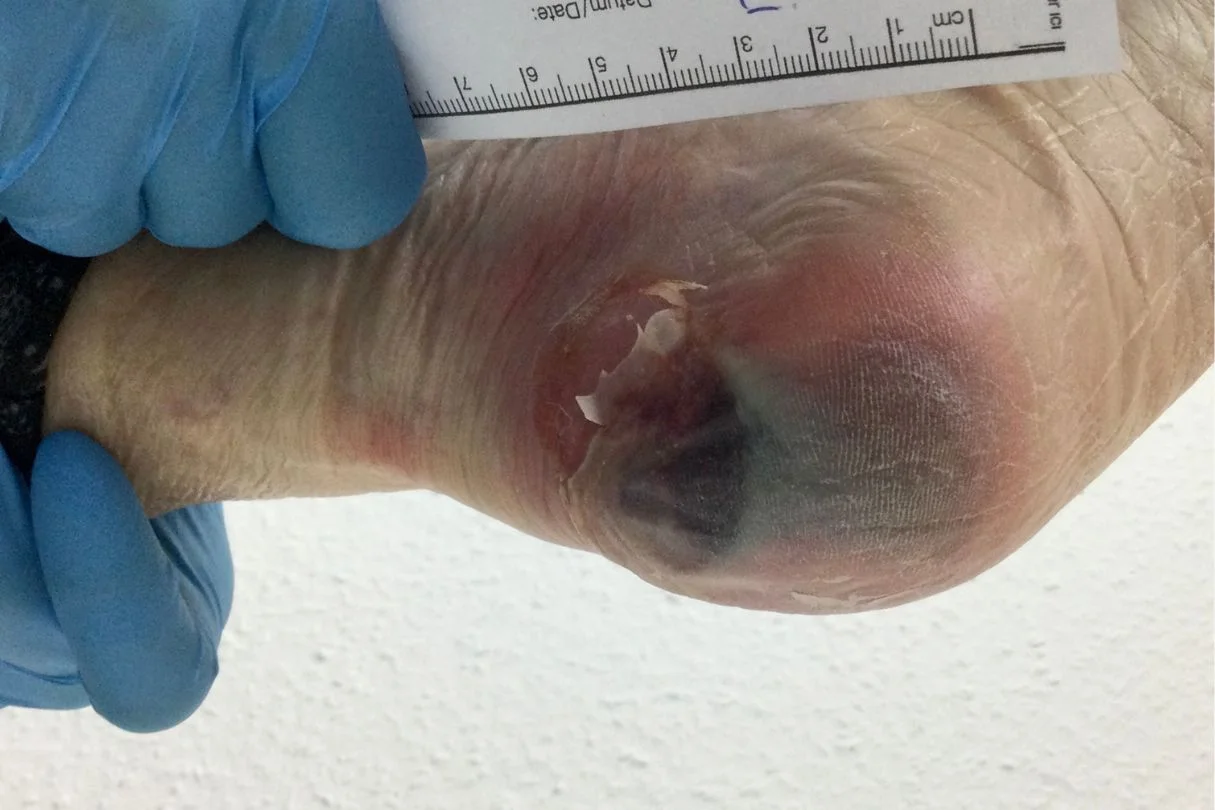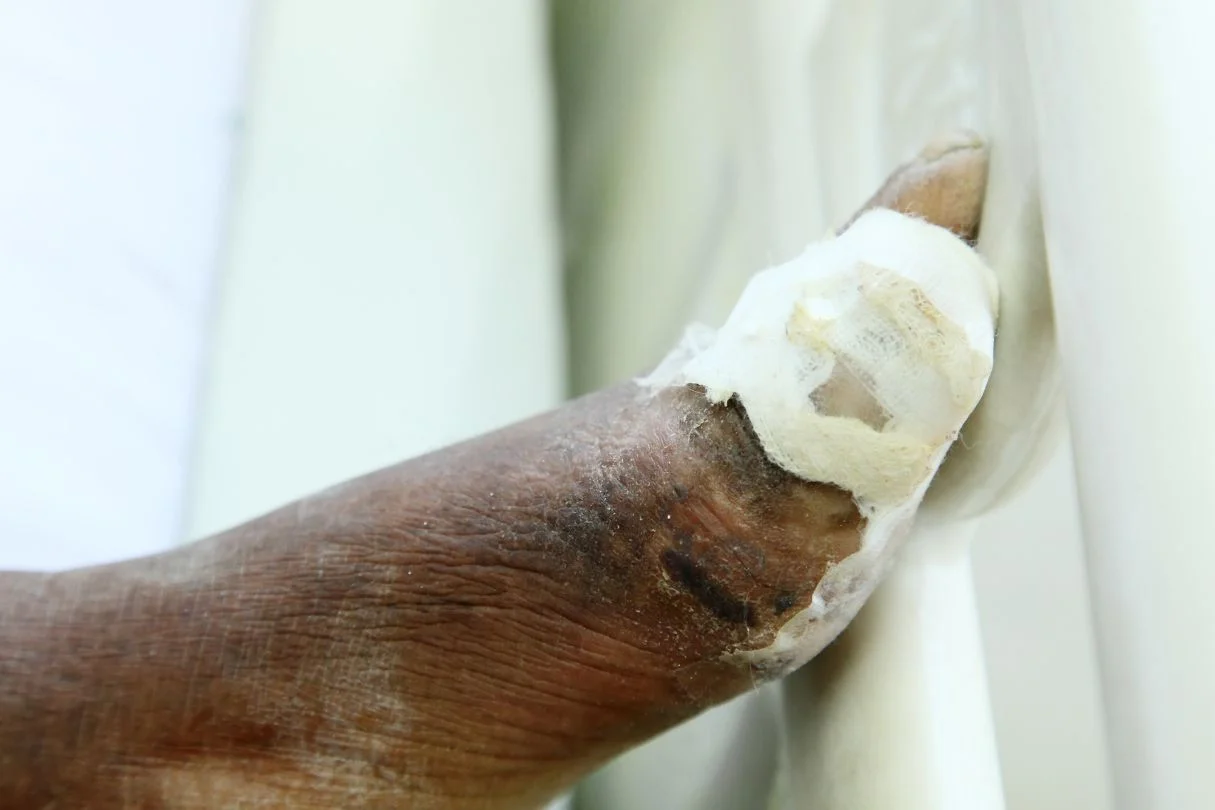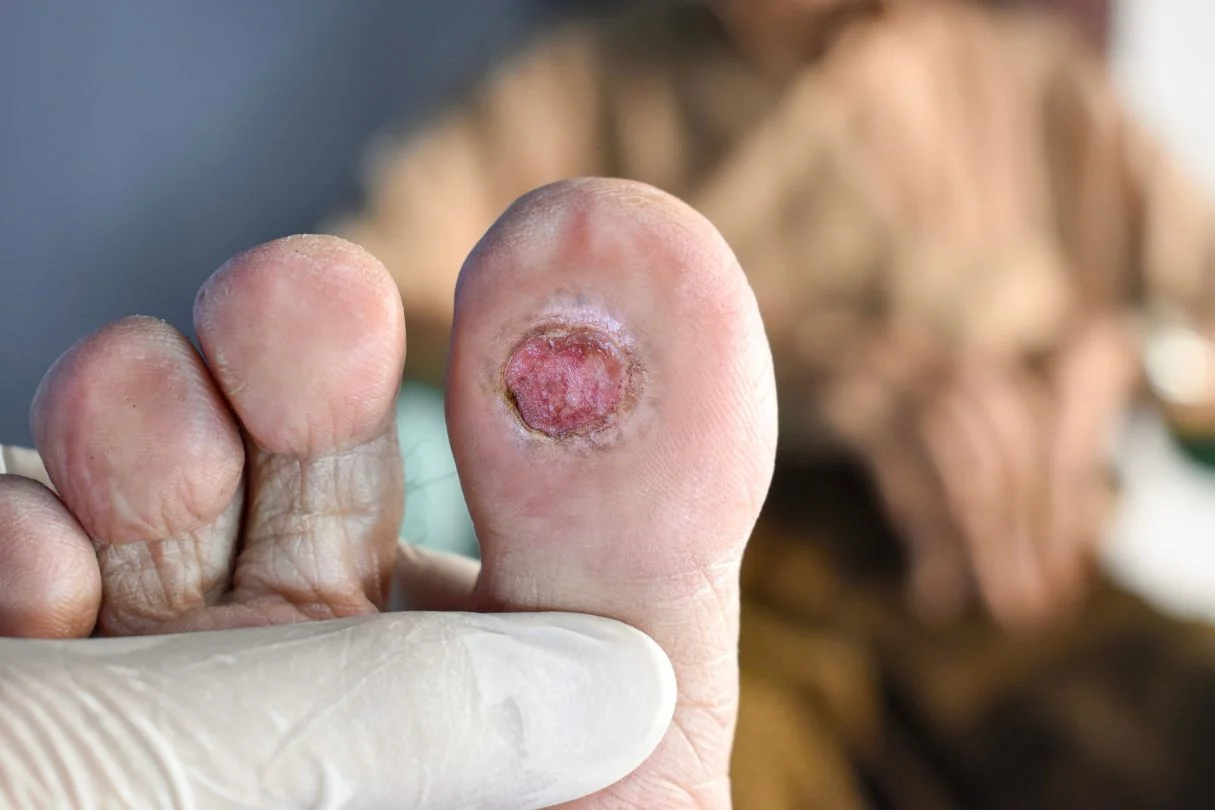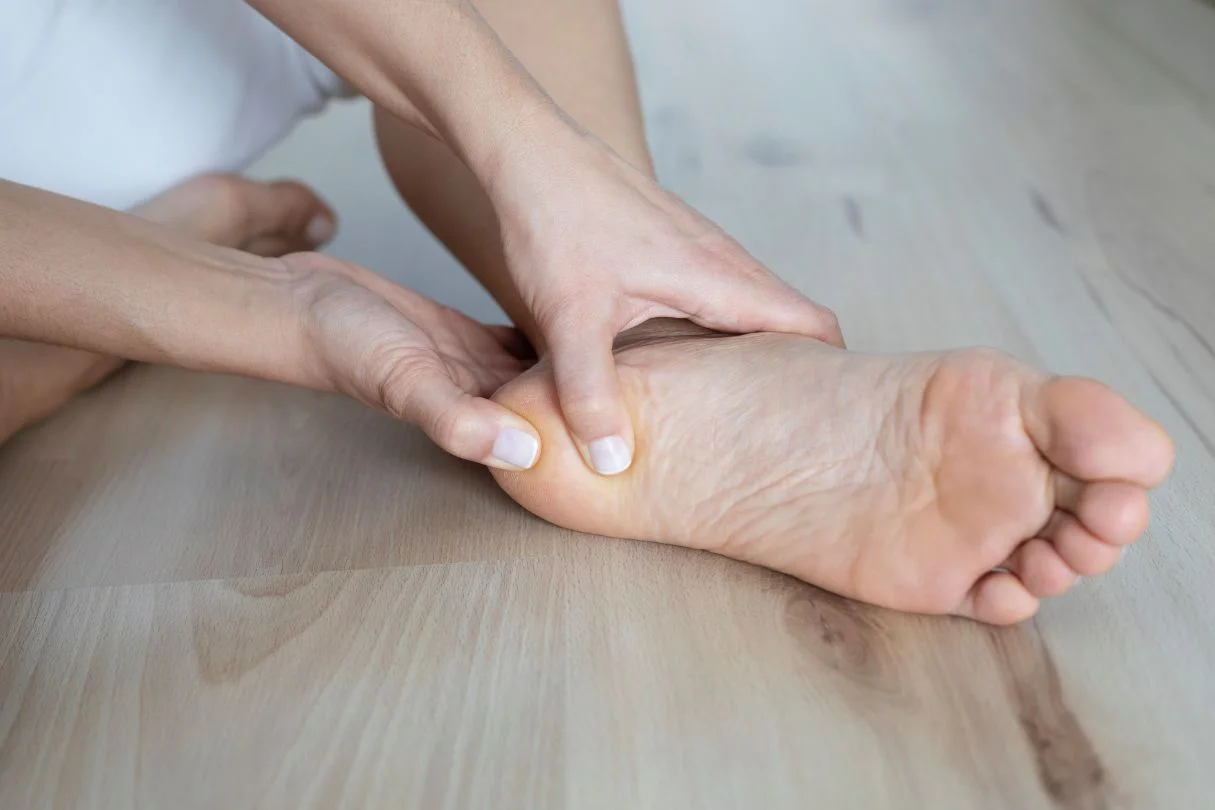Diabetic foot ulcer is a common and serious complication that occurs in diabetic patients. It affects up to 15% of patients. Unfortunately, more than 50% of individuals with these ulcers may face life-threatening complications within five years if left untreated. [1][2]
Recognizing the early signs of a foot ulcer is critical because rapid intervention can prevent amputations.
In this article, we will discuss signs and symptoms that can help you identify if you have a diabetic foot ulcer early on.
The Signs and Symptoms of Diabetic Foot Ulcers
Here are the main symptoms to be aware of:
Skin discoloration
One of the first indicators of a foot ulcer is a noticeable change in skin colour. This may include redness, darkening, or a bluish tint around the affected area.
Discoloration is due to inflammation and compromised blood flow to the tissues, which signals the early stages of an ulcer.
Swelling and redness
Swelling around a specific area on your foot can also indicate the onset of an ulcer, especially if it’s associated with redness. This swelling may extend to surrounding tissues and should be monitored closely.
Presence of calluses or corns
Calluses and corns are thickened areas of skin that result from repeated friction or pressure. Although they are prevalent in people with diabetes, they can also be precursors to foot ulcers. If left untreated, they may develop into open sores or wounds.
Pain and tenderness
Although peripheral neuropathy might reduce the sensation in your feet, you may still experience some pain or tenderness. This could be a sign of underlying tissue damage or the early stages of a foot ulcer.
Drainage and odour
If you notice any unusual drainage from a wound on your foot with a pungent odour, this could be a sign of infection.
It’s important to seek medical attention immediately if you observe these symptoms.

Visual characteristics of diabetic foot ulcers
Foot ulcers can vary in appearance. However, there are common visual cues that can help you identify them:
Size and shape of the ulcer
Foot ulcers can range in size from small and round sores to larger and irregularly shaped wounds. Early-stage ulcers might be less than a centimeter in diameter and may seem minor, but they should never be ignored.
As ulcers progress, they can become deeper and more severe, which exposes subcutaneous (fatty) tissues, muscles, joints and even bones.
Surrounding skin condition
The skin around a foot ulcer might be thickened, dry, or callused. In more advanced stages, the ulcer could be surrounded by eschar (a black or brown tissue that forms due to necrosis—tissue death). Eschar is a serious sign that requires immediate medical intervention.
Depth and tissue involvement
The depth of the ulcer can provide insight into its severity. Superficial ulcers involve only the skin, whereas deeper ulcers may affect underlying tissues. The deeper the ulcer, the greater the risk of complications (e.g. infections).
How to prevent diabetic foot ulcers
The prevention of diabetic foot ulcers is the best approach, as management can be very complicated.
Here are some practical steps you can take:
Maintain proper blood sugar levels
Keep your blood sugar levels under control to prevent diabetes complications. According to studies, this is one of the most effective ways to prevent foot ulcers. What’s more, a healthy diet, proper compliance with treatment, and regular physical activity can all prevent diabetic foot ulcers. [3]
Regular foot care routine
Incorporate daily foot care into your routine. This includes washing your feet with warm water and mild soap, drying them thoroughly (especially between the toes), and inspecting them for any cuts, sores, or changes in colour. You should also moisturise your feet daily and gently file any dry, thickened skin.
Make sure to use a mirror to check areas that are difficult to see.
Choose appropriate footwear
Wear well-fitting shoes that protect your feet from injury. Avoid tight shoes as they can cause blisters or sores that may develop into ulcers. You should also always wear slippers at home, preferably those with thick, soft soles and covers the toes to protect your feet from any accidental cuts.
Also, consider putting on socks that provide cushioning and reduce friction.
Trim your nails carefully
After bathing, trim your nails straight across to avoid ingrown toenails, which can cause infections. Filing rough edges can also prevent skin damage.
Avoid prolonged pressure
Try not to sit, stand, or cross your legs for extended periods. These habits can impede blood flow to your feet and cause pressure sores. Proper circulation is indispensable for healing wounds and preventing ulcers.

When to Seek Medical Attention
Diabetic foot ulcers are serious and require prompt medical attention. Here are the situations when you should see a healthcare professional:
If you notice any of the early signs mentioned—such as discolouration, swelling, or the presence of calluses or corns—schedule an appointment with a podiatrist or a diabetic foot specialist. Early intervention can prevent the ulcer from worsening and reduce the risk of amputations.
Don’t ignore ongoing pain, tenderness, or discomfort in your feet. These symptoms may indicate a developing ulcer or an existing one that requires more intensive care. If a wound on your foot does not show signs of healing after a few days of home care, it’s essential to consult with your doctor. Non-healing wounds are at high risk of infection and need professional treatment.
Symptoms like drainage, a foul odour, or the appearance of eschar around a wound are clear indicators of infection. In such cases, immediate medical care is necessary to prevent the infection from spreading and to avoid more severe outcomes, such as amputation.
Check out this article to learn more about diabetic foot ulcer treatment.
Multidisciplinary Diabetic Foot Team in Singapore
At Straits Podiatry, we understand the importance of managing ulcers early to reduce the risk of amputations. Therefore, we have a diabetic foot team consisting of podiatrists, orthopaedic surgeons and other specialists who strive to provide multidisciplinary care that is efficient and tailored to your needs.
If you suspect that you may have a diabetic foot ulcer, contact us or schedule an appointment with our diabetic foot team today.
Need Help? See Our Podiatrist Today
Takeaway message
Diabetic foot ulcers are a serious complication that requires vigilance, early diagnosis, and aggressive management. Understanding early signs and symptoms, visual characteristics of ulcers, and preventive measures can all reduce the risk of diabetic foot ulcers.
We hope this article sheds some light on how to tell when you develop a diabetic foot ulcer.
If you have any questions or concerns about diabetic foot ulcers, feel free to check out other posts that we covered.
References
Podiatrist experienced in diabetic foot management and amputation prevention.
Jackie Tey
Chief Podiatrist, B.Pod(Hons). Your foot and lower limb specialist passionate about raising awareness for foot and lower limb health.








